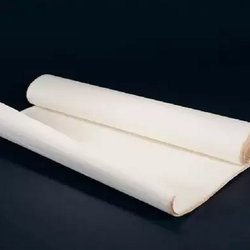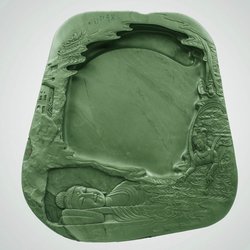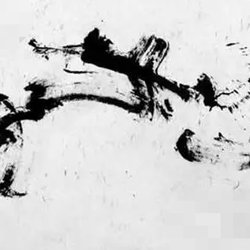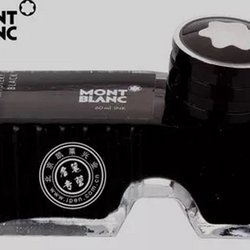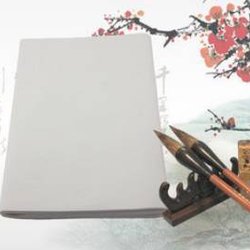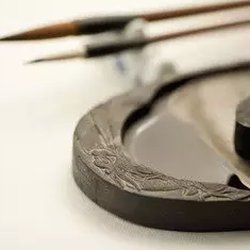If you want to do your job well, you must first sharpen your tools. The same goes for practicing calligraphy! Many beginners have a misunderstanding when choosing a brush: they think that buying an expensive brush is definitely the right thing. But the opposite is true. Having money may not buy you a good brush.
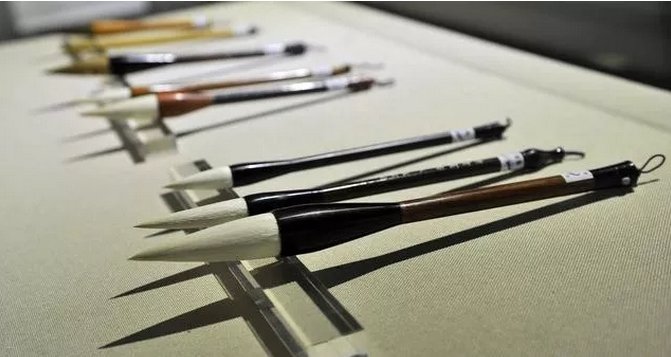
So when choosing a brush, how to choose a suitable brush? What should you pay attention to when purchasing?
Pen selection skills
There are roughly four criteria for buying a pen: size, hardness, length, and thickness. There are a lot of pens in the store. If you eliminate the pens you don’t need, the rest will be almost the same, and you can basically buy the pens you need.
There are two basic data for a brush. One is the length of the tip, which is the part of the pen tip exposed outside the pen barrel. The other is the diameter of the pen tip. The pen tip is a cone, and the diameter of the pen tip is the width of the cone bottom.
1. Size
The size of the brush is determined by the diameter of the pen tip.
Whether you buy a large pen or a small pen depends on how big your writing is.
Usually when learning calligraphy, you should start with large characters.
Fengfang of the Ming Dynasty's "Children's Calligraphy Process·Picture of the Steps of Learning Calligraphy" teaches the steps of calligraphy:
Large regular script, from eight to ten years old, "Ode to Zhongxing", "Dongfang Shuo Stele", and "Wan'an Bridge". Zhongkai, from 11 to 13 years old, "Jiucheng Palace Inscription", "Yu Gong Gong's Epitaph", "Yao Gong's Gong's Epitaph", "Legitimate Teaching Sutra".
Small regular script, from fourteen to sixteen years old, "Declaration Table", "Rong Road Table", "Li Ming Table", "Lewei Table", "Cao E Table".
Fengfang mentioned that Ouyang Xun's "Jiucheng Palace" has characters one inch square, which was called Cun Kai in history. Strictly speaking, large regular script should be at least twice as big as inch regular script.
In short: a large pen can write small characters, but a small pen cannot write large characters.
2.Hard and soft
The brush itself is soft. The softness and hardness discussed here are meant to be soft but hard, so that it can be pressed down and lifted up. It's not just as soft as cotton, it's just a lump of mud. It's impossible to write with a pen like that.
Hard centimeter pen, pure wolf centimeter pen, pure purple centimeter pen, oolong water, soft centimeter pen, and combined centimeter pen. The materials used for the combination pen are: the core of the pen is mainly hard centimeter, plus soft centimeter liner. You can use only one kind of soft centimeter for the cover. millimeter. Wei Dan's "Bi Fang" uses purple hair and green wool as the center of the brush. The advantages of Jianhao are: moderate softness and hardness, smooth writing, and the best one to use is Jianhao.
The softness and hardness of the brush must also match the paper. Lu Xie of the Tang Dynasty said in "Linchi Jue": "If the paper is hard, use a soft pen." That means hard paper should be written with a soft brush. "Purely hard" means that paper is hard and the brush is also hard. "Purely rigid is like using a cone to paint a stone." "Purely soft" means that paper is soft and the brush is soft. "Purely soft is like using clay to paint a stone." Washing the mud will not make it smooth, and the divine personality will be lost." He also said: "Painting on rocks and walls", writing on rocks or walls, "is the same as the paper", just like the hard paper, "the cover is in harmony with it". If you write with a soft pen, it will match well.
3. length
The length of the pen tip is determined by the data of the front.
The advantage of a long tip is that it has a higher ink storage capacity, but the longer the tip, the harder it is to control the nib. The disadvantage of a short tip is that it stores less ink, but a short tip makes it easier to control the nib. The pros and cons of the center lie somewhere in between.
Whether to use a long forward, a center forward, or even a short forward depends on your needs.
For example, iron wire seal script requires absolutely uniform lines. If you use a long-sharp pen to write, it will easily twist. Some calligraphers in the Qing Dynasty bundled the pens, leaving only one pen tip. In fact, they used a short-sharp pen to write. If you write, it will be much more stable.
Jiang Kui's "Xu Shu Pu" of the Song Dynasty said: "Long but not strong is not as good as Fu Long; strong but not round, it is not as good as Fu Jin". What he meant was: if the front edge is long but not hard enough, the waist of the pen must be weak, so it is better not to be long. The tip of the pen is not round enough and is asymmetrical on all sides. It will be even more disobedient if it is hard, so it is better not to be hard.
In short: If you are a beginner in calligraphy, it is recommended that you choose the center.
4.Thickness
Thickness refers to the pen shape, which is the shape of the pen tip.
The tip of the pen is relatively thick, which is called "thick" in the jargon. If it is relatively sharp and too thin, we call it thin.
In short, beginners can consider the following four points when choosing a brush:
Size: One for joint pen and one for screen pen.
Hard and soft: both.
Long and short: Center.
Thickness: Appropriately thick.
Tips for opening a pen
Newly purchased brushes are usually fixed with seaweed glue. First, the seaweed glue must be removed before use. This step is customarily called: opening the brush.
The method of opening the brush is very simple. Prepare a basin of water, soak the brush in the water, and wait until the colloid dissolves. Generally, in order to speed up its dissolution, you can press the brush gently with your fingers during the process of opening the brush.
After opening the brush, dry the brush. The normal operation method is to use paper or towel to absorb the moisture on the brush. In order to dry the brush thoroughly, you can try to pull the brush apart as much as possible.
Washing the brush is relatively simple, but remember to only wash it with cold water, not hot water. Hot water will soften the brush. Under the open faucet, gently put the brush inside and let it rinse for about a minute. You will see that the black color of the ink washed away gradually becomes lighter and the water becomes clear. To judge whether the brush has been washed, you can take a white porcelain vessel, add water, and stir the brush in it. If you find that there is still black color, repeat the previous steps until the water is basically clear.

